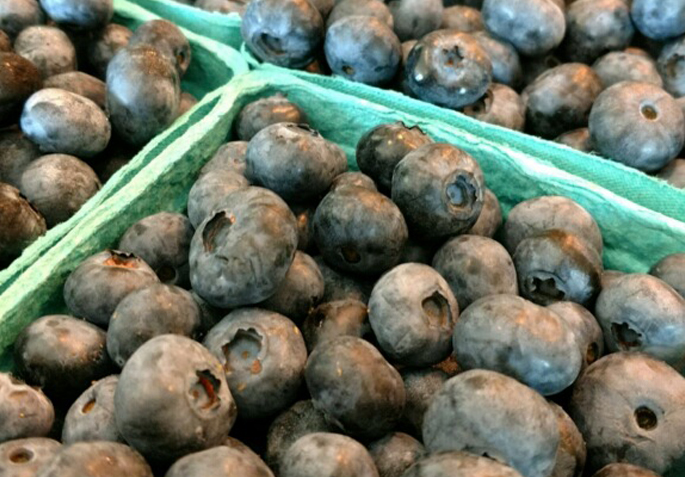All fruits and vegetables from the blue and purple color family contain flavonoids, the most powerful phytochemicals found in nature.
The following are excellent examples of foods that contain flavonoids: Black currants, black berries, blueberries, black olives, eggplant, elderberries, plums, prunes, purple cabbage, purple figs, purple grapes, raisins.
Many blue and purple foods contain flavonoids. When blueberries were tested against more than 20 other fresh fruits, blueberries were found to contain more antioxidant power. Wild blueberries have more antioxidants than cultivated blueberries.
Blueberries
Blueberries provide traditional nutrients-carbohydrates, fiber, vitamin C, vitamin E, beta-carotene, folic acid, iron and potassium. However, that is not what has researchers so excited. They are interested in the phytochemicals that are so concentrated in these little berries. These phytochemicals include anthocyanins, proanthocyanidins, myricetin, quercetin, resveratrol, and ellagic acid. These phytochemicals give the blueberry the ability to:
- Lower the risk of urinary tract infection
- Protect against cardiovascular disease
- Help reduce short term memory loss and Alzheimer’s disease
- Provide anti-inflammatory abilities
- Help to ease the symptoms of menopause
- Prevent cancer, especially colon, breast and lung
- Improve eye health
- Reduce the risk of osteoporosis
Older rats fed the equivalent of 1 cup (C) of berries a day are able to navigate their mazes like their younger counterparts. In addition, the older animals’ legs were as muscular as those of younger animals.
Combining blueberries with heart healthy fats seems to increase the flexibility of brain cell membranes and reduce the risk of atherosclerosis. Some researchers consider walnuts as an ideal perfect partner for blueberries. A diet that is moderately rich in blueberries (about 1 cup/day) proved to decrease total cholesterol and low-density lipoprotein cholesterol, in a study published in the British Journal of Nutrition.
Other research has shown that regular intake of blueberries also my increase high-density lipoprotein levels, also known as healthy cholesterol. Some researchers are even calling blueberries “brainberries,” because of their ability to slow and even reverse deficits in brain functioning. In fact, one study published in Experimental Neurology showed that when rats were fed blueberries, they decreased the brain damage caused by strokes and other neurological disorders.
Fresh, frozen or canned blueberries
Which are best? The absolute gold standard is wild blue berries, flash frozen to preserve the phytochemicals.
If on a low-oxalate diet
Blueberries do contain several acids. People who must follow a low oxalate diet may want to avoid eating blueberries.
Food interactions
The oxalates in blueberries seem to block the absorption of calcium to some extent. Even though it is not dangerous to eat the two foods together, you might not want to count all of the calcium consumed along with blueberries. If you consume plenty of other calcium-rich products, it probably is not of any concern.
Article submitted by Paula M. Fairchild, DTR, Clinical Nutrition Services


 Quality Awards
Quality Awards
